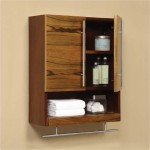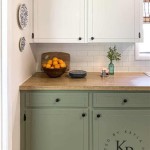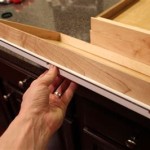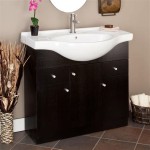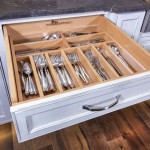Can You Paint Kitchen Cabinets Without Sanding Or Priming?
Painting kitchen cabinets can be a daunting task, but it's definitely doable without sanding or priming. By following these simple steps, you can achieve a professional-looking finish that will last for years to come.
1. Clean the Cabinets
The first step is to thoroughly clean the cabinets. This will remove any dirt, grease, or grime that could interfere with the paint's adhesion. Use a mild soap and water solution and a clean sponge or cloth to wipe down the cabinets. Rinse the cabinets with clean water and allow them to dry completely.
2. Repair Any Damage
Once the cabinets are clean, inspect them for any damage that needs to be repaired. This could include filling in any holes or cracks with wood filler, or replacing any damaged hardware. Once the repairs are complete, allow them to dry completely.
3. Choose the Right Paint
Using a high-quality paint specifically designed for kitchen cabinets is essential. These paints are more durable and resistant to wear and tear than standard paints. They also have a higher sheen, which will help to reflect light and make the cabinets look brighter and cleaner.
4. Apply the Paint
Start by applying a thin coat of paint to the cabinets. Use a brush or roller and work in even strokes. Allow the first coat to dry completely before applying a second coat. For best results, apply three or four thin coats of paint, allowing each coat to dry completely before applying the next.
5. Protect the Finish
Once the paint is dry, you can protect the finish by applying a clear polyurethane sealer. This will help to protect the paint from scratches and wear and tear and will also give the cabinets a beautiful shine.
Additional Tips
Here are a few additional tips for painting kitchen cabinets without sanding or priming:
- Use a high-quality brush or roller.
- Apply thin coats of paint and allow each coat to dry completely before applying the next.
- Use a clear polyurethane sealer to protect the finish.
- Be patient and take your time. Painting kitchen cabinets without sanding or priming takes a little more time and effort, but the results are worth it.

Painting Over Oak Cabinets Without Sanding Or Priming Hometalk

Can You Paint Kitchen Cabinets Without Sanding

How To Paint Kitchen Cabinets Without Sanding Or Priming Latex Agent

How To Paint Kitchen Cabinets Without Sanding Or Priming And Get Long Lasting Results Home Remodeling Diy Painting

How To Paint Kitchen Cabinets Without Sanding The Budget Decorator

How To Paint Kitchen Cabinets Without Sanding Or Priming

How To Paint Kitchen Cabinets Without Sanding Or Priming

Paint Your Kitchen Cabinets Without Losing Mind Diy Renovation Redo

Paint Kitchen Cabinets Without Sanding Six Simple Steps

How To Paint Kitchen Cabinets Without Sanding Or Priming
Related Posts




